Interview with Award-Winning Author Andrea Wang
An uplifting discussion on crafting books that honor and celebrate the richness of diverse cultures, languages, and voices.
I’m so excited to have my wonderful friend and talented author, Andrea Wang, joining me for today’s post! I’ll never forget when we first met at the 2018 American Library Association Conference in New Orleans. That same year, her debut picture book, The Nian Monster, which I had the joy of illustrating, won the Asian/Pacific American Awards for Literature (APAAL) Picture Book Honor. We hit it off right away and have kept in touch ever since!
I’ve always been inspired by how Andrea beautifully blends her cultural heritage, languages, and personal experiences into her writing. It’s such a treat to have her here for this interview, sharing her writing journey with all of us!
Alina: Did you enjoy writing as a child? When did you decide to become an author?
Andrea: I loved writing as a kid! I loved it so much that I borrowed my dad’s typewriter to type up my stories and made them into books at home. I even wrote an author’s bio in the back of one of them that said I wanted to be an author when I grew up! That didn’t happen for a long time after I grew up, though. I had a different career as an environmental scientist before I had two kids and decided to stay home to raise them. I read tons of picture books to them and brought them to the library all the time. When I ran out of English-language books to read to them during a trip to China, I started to write a story to entertain them. After I returned home, I decided to pursue my childhood dream of becoming an author.
Alina: I first met you when I illustrated your debut, The Nian Monster, which received the Asian/Pacific American Librarians Association (APALA) Picture Book Honor in 2018. Andrea, please correct me if I'm mistaken, but is this your debut book? I'd love to hear more about what inspired you to give a modern twist to such a traditional Chinese myth!
Andrea: Yes, The Nian Monster was my debut book. I was thrilled that you agreed to illustrate it! There were a few things that inspired me to write the story: at that time, fairytale and folktale retellings were popular; I couldn’t find many contemporary Chinese New Year picture books to read to my kids; and I’d never heard of the Nian Monster before, so I wanted to share about the monster with a wider audience. There was also a non-Asian neighbor who said, “Welcome back to civilization” when I returned from a trip to China, which made me so mad! I decided to have the book show both how long China has been a civilization and also how modern it is today.
Alina: Since The Nian Monster, you've written books of different genres—from fiction to nonfiction, including chapter books and picture books! Could you share your thoughts on the similarities and differences when writing for different age groups and genres?
Andrea: I like writing for different age groups, formats, and genres because it works different parts of my brain. I love doing research and I go down a lot of rabbit holes when researching for both my nonfiction and fiction books. The amount of research I do for fictional picture books is probably less than for nonfiction, but not by much! I get to stretch my imagination a bit more with fiction, especially for my middle grade novels. It’s fun to be able to make up places and people, and to describe everything in detail, which I can’t do for picture books. I have the same problem of over-writing whether I’m working on picture books or chapter books – I always have to cut a lot of words after the first draft! Revising chapter books is actually easier for me than revising picture books, where every word matters so much more. And changing one word often leads to changing a whole sentence because it sounds better when read aloud. That is one thing that’s very different when writing picture books versus longer works – the fact that picture books are usually read out loud. I think a lot more about how the story will sound when it’s read aloud to a kid (or by a kid). But, weirdly, I don’t think too much about the target age group of a book when I’m writing it. I think it’s good for readers to come across words they don’t recognize or read about topics that other people might consider challenging.
Alina: Magic Ramen: The Story of Momofuku Ando is a nonfiction biography picture book. Could you share what inspired you to write a story about Momofuku Ando? Is ramen one of your favorite foods?
Andrea: It’s pretty ironic that I ended up writing a book about ramen because not only do I dislike eating soup, but I was also on a gluten-free diet for a long time! So no, ramen isn’t one of my favorite foods, but I do like instant noodles that aren’t in soups, like the Indonesian mie goreng.
It was actually my very picky kids that inspired me to write Magic Ramen. Instant ramen was one of the only foods they would consistently eat, and I started wondering what was its origin story. I wanted to send up a little “thank you” to whoever had invented it! As I dove into the research, I discovered Momofuku Ando and was very moved by his goal of spreading peace by feeding people. I also think it’s fascinating that instant ramen has become such a huge part of popular culture!
Alina: We must discuss the award-winning book, Watercress. It has received several prestigious accolades, including the Caldecott Medal, Newbery Honor, Asian/Pacific American Award for Literature, Horn Book Honor, and many more. Like many readers, I was deeply moved by the story. It feels very personal, yet also universally relatable. Could you please share the inspiration behind this book?
Andrea: I don’t think it’ll come as a surprise to anyone who’s read Watercress that it was written out of grief. My mom passed away when I was 29 and it was probably the most traumatic and defining moment of my life. Afterwards, I started writing a series of personal essays, one of which was about my childhood memory of picking watercress with my family. I just couldn’t let this memory go, and I didn’t know why, so I kept trying to write about it. That personal essay eventually morphed into a picture book after I decided to try and write children’s literature, and then after several more years, I finally wrote the version that was published. By that time, my grandparents and father had also passed away, so I took all those raw feelings of grief and shame and longing and put them into the book.
Alina: I really appreciate how you incorporate Chinese and various other languages into your stories! For instance, in "Luli and the Language of Tea" and "The Many Meanings of Meilan," the inclusion of different languages adds so much depth to the narrative. I’d love to hear your thoughts on how languages enrich storytelling.
Andrea: How much time do you have? <laughs> I guess the short answer is that I grew up hearing Mandarin, Cantonese, and Hakka in my family, so I wanted my stories to reflect that experience. But I’m not fluent in any of my heritage languages, so there was also a lot of confusion and misunderstanding on my part. I often felt left out of conversations or jokes because I didn’t understand all the words being said or didn’t get the Chinese cultural references, so I made that part of Meilan’s experience, too. And interestingly, I also didn’t understand a lot of English jokes when I was little because I lacked an American cultural perspective. From a writerly perspective, incorporating non-English languages into stories provides a window into another culture for the reader, validation for a reader who speaks that language, as well as a source of potential conflict for my characters. For Luli and the Language of Tea, I had fun turning that potential conflict – no one speaks each other’s language – into a source of connection when they all understand the word for “tea.” Using non-English languages in stories can reveal a lot about a character while also recognizing (and celebrating) the many ethnicities and cultures that make up the United States.
Alina: In "The Many Meanings of Meilan" and "Summer at Squee," you incorporated Chinese words or proverbs into the characters' dialogues. It added a sense of cultural authenticity and provided insight into the characters. Do you find it challenging to integrate different languages into your stories? How do you handle translating the expressions of a foreign language into English?
Andrea: Except for Mandarin, I wouldn’t feel comfortable incorporating more than a word or phrase of another language into my stories, because it’s not my lived experience and I’d be too afraid of getting something wrong. Even with Mandarin, I rely on a variety of resources to make sure that I’m writing or translating it correctly as well as representing the culture accurately. I have a collection of dictionaries, books of idioms/proverbs, and academic books about Chinese culture and philosophy that I often consult. And for the Cantonese phrases in Summer at Squee, I consulted you! 😊 Friends who speak their heritage languages have been super helpful, and for both The Many Meanings of Meilan and Summer at Squee, my publisher hired language consultants to ensure everything was accurate.
Alina: In "Summer at Squee," I absolutely love the variety of characters at the Chinese Culture camp! Even though they’re all Chinese Americans, each one brings a different perspective on their cultural identities and experiences. I find myself really connecting with Harrison since we share similar backgrounds. I’d love to hear more about your creative process for this book and how you brought each character’s personality to life!
Andrea: Aww, thanks! It’s so nice to hear that I managed to convey all the campers’ different perspectives. This book was the first time that I had so many characters – there are sixteen people in Phee’s camp group alone, not to mention her parents, siblings, other friends, etc. It was a lot to keep track of, and my initial drafts didn’t develop all the secondary characters very well. At my editor’s suggestion, I went back and created backstories for nearly all of them. I gave them distinct personality traits, likes, dislikes, and aspirations. It was a lot of fun. Squee is based on a real Chinese heritage summer camp that my kids attended and for which I was on the organizing committee. They had a large number of Chinese adoptees attending as campers and counselors, and I became curious about how they identified and how Chinese American kids from a variety of life experiences interacted with each other. So I was able to draw on my observations and experiences with some of the real-life campers to create the different characters for the book.
Alina: If you could spend a day traveling to a book world, which book would you choose?
Andrea: This is a great question – but so hard to answer! I love reading fantasy, but do I really want to go to a world where I could be burnt to a crisp by a fire-breathing dragon? Um, no thank you. Right now I feel the need for a world that is safe, that has good people doing good things, with a little bit of magic and a lot of wonder. That brings to mind the wonderful picture book The Night Gardener by Eric and Terry Fan. I’d love to visit for a day (and a night) and marvel at all the gardener’s creations.
Alina: How do you overcome writer's block when you feel stuck?
Andrea: I either do something completely unrelated to writing, like taking my dog for a long walk, or I dive into the craft of writing by reading craft books or taking webinars. I can’t count the number of times that I’ve gotten an idea for how to solve a problem in my WIP when I’m listening to a webinar. Sometimes the webinar topic is completely unrelated to the reason why I’m stuck, but listening to someone analyze craft often gives me a new perspective on what I can try to solve the issue.
Alina: What advice would you give to aspiring writers?
Andrea: Reading lots of books in the genre and format you want to write is always helpful. Read them with a critical eye – ask yourself why something works or maybe why you don’t like a particular phrase or sentence. Aside from reading, I’ve been thinking about attachment. It’s great to have passion for the story, for the topic, for the characters you’re writing. But try not to have so much attachment that you aren’t willing to revise. Play around – with the words, the plot points, the characters. Try out unusual voices, different POVs, non-traditional plots and structures. You never know when something different might work better for the story unless you try it out. Save your drafts so you can always go back and re-incorporate something you’ve decided the story can’t live without.
Alina: Are there any new projects you’re currently working on, or perhaps an upcoming book release or event that you’d like to share?
Andrea: My second nonfiction picture book biography comes out this fall and I’m really excited for readers to see it! The title is WORTHY: THE BRAVE AND CAPABLE LIFE OF JOSEPH PIERCE, and it’s about a Chinese American man who fought in the American Civil War. The illustrations by Youa Vang are wonderful!
Alina: Where can readers keep up with your book news and follow you?
Andrea: My website is www.andreaywang.com, and I’m still on Instagram for the time being, at @AndreaWhyWang. I’m also in a group newsletter called Uplift: AANHPI Kidlit News (https://upliftkidlit.substack.com/), where you can find my upcoming public events. I’m hoping to start my own Substack newsletter soon, too. It’s one of my New Year’s resolutions! 🙂 Thanks so much for hosting me on your newsletter, Alina!
Alina: Andrea, thank you so much for joining my Substack for this inspiring interview—it's always a pleasure to chat with you. For everyone else who’s curious about The Nian Monster, you can visit The Nian Monster Collection to discover more behind-the-scenes stories about the book.
Discover more stories from wonderful children's book creators. Click the link to read our Author Interviews Collection.




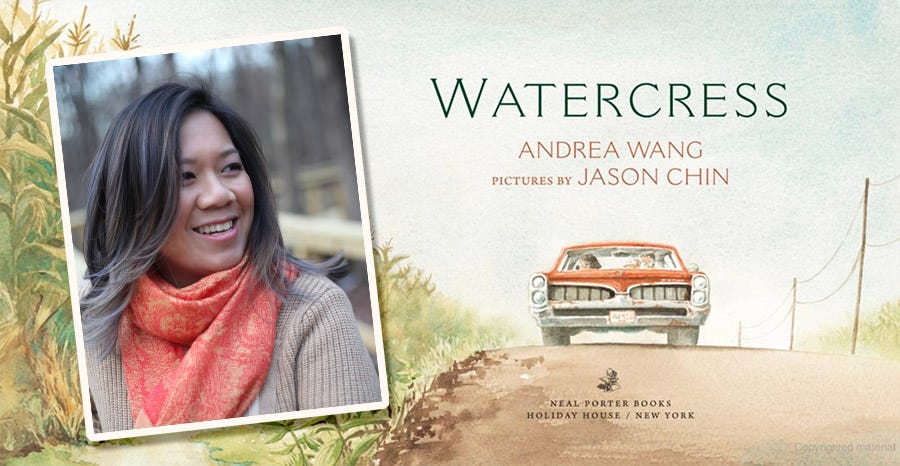
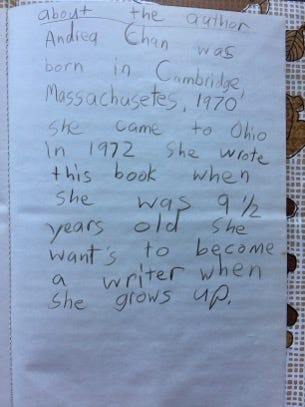
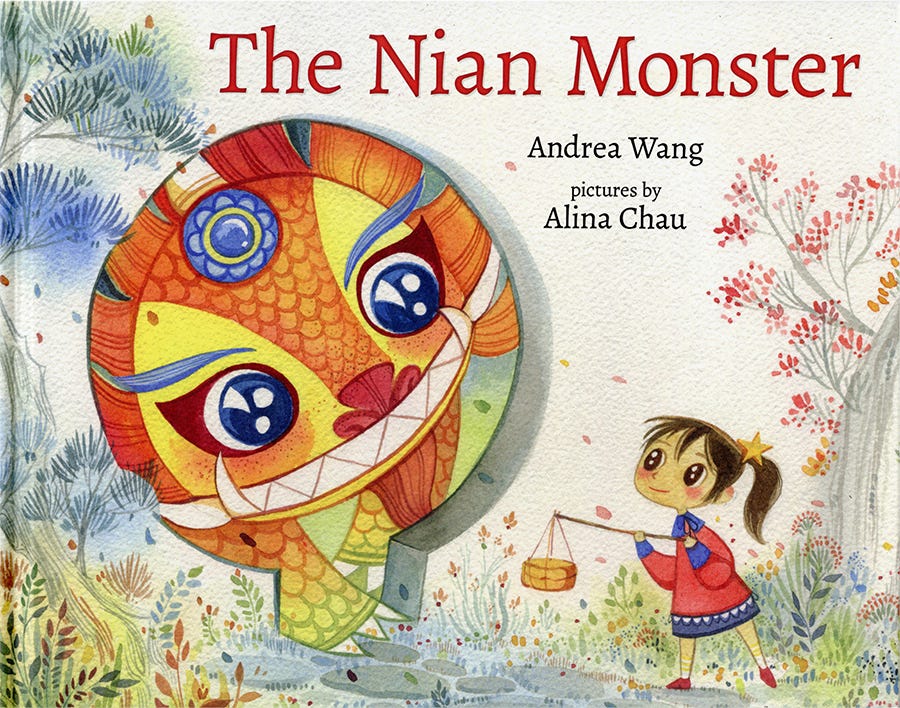
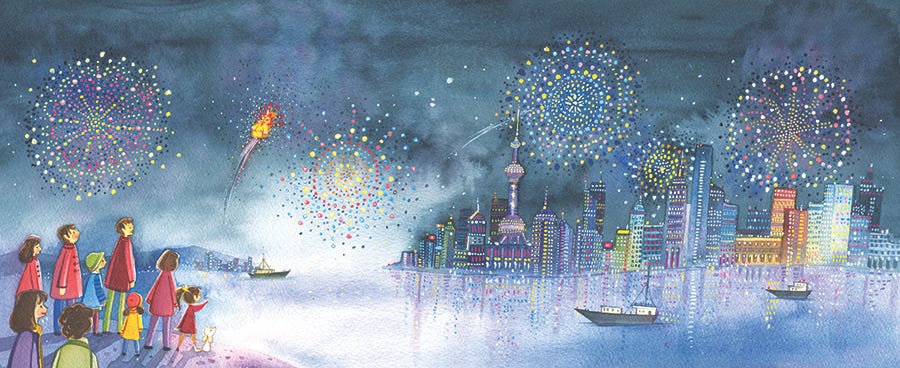
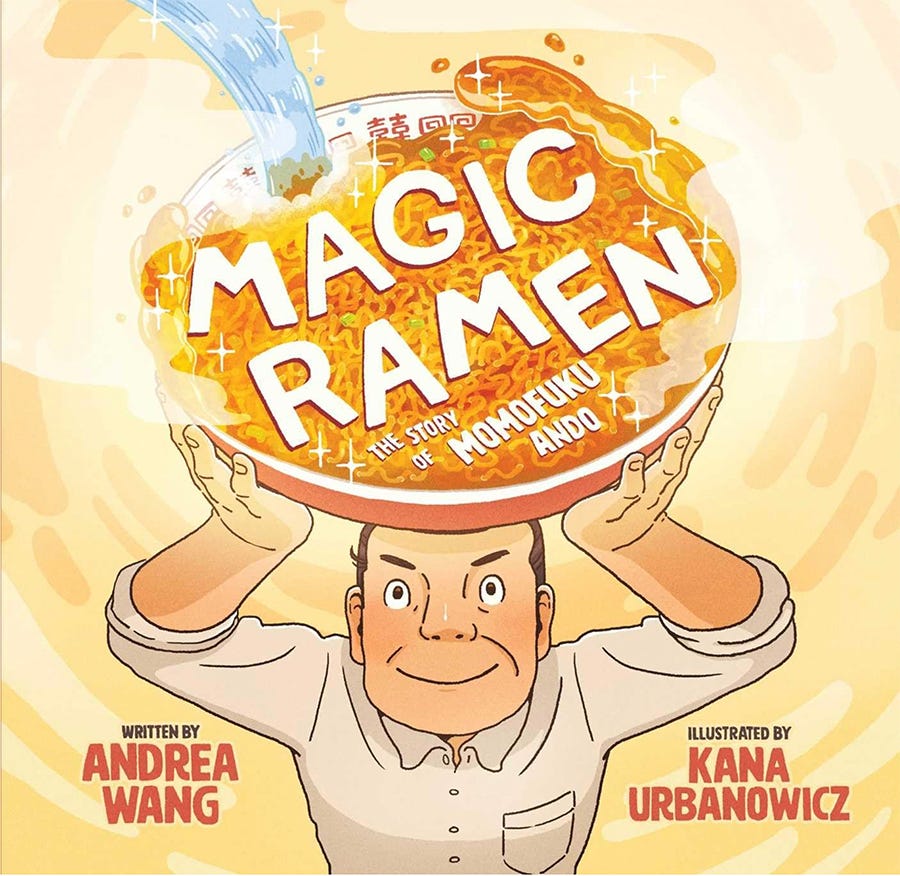
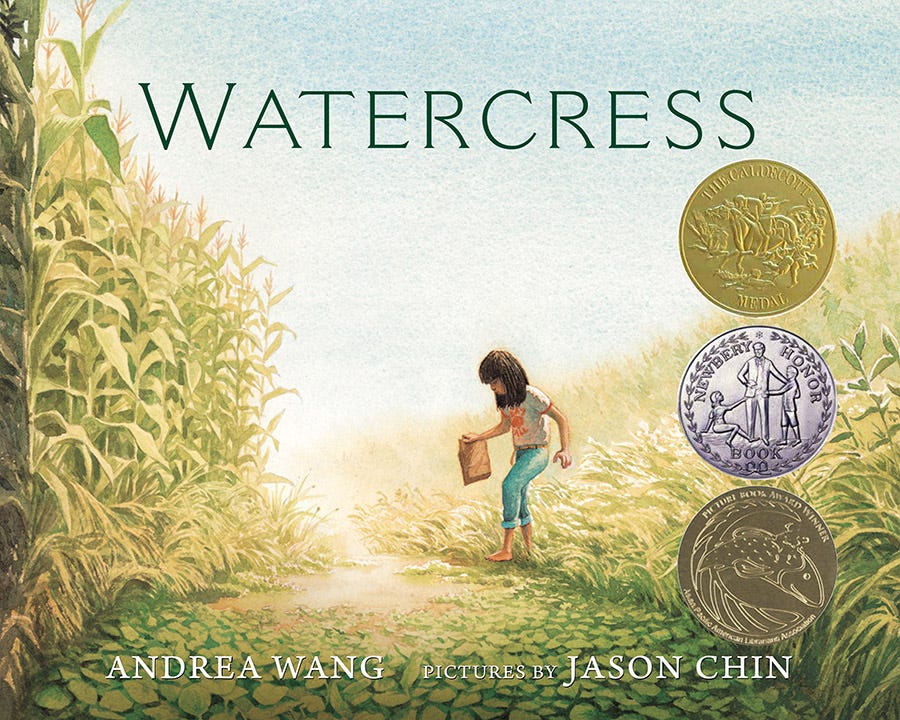

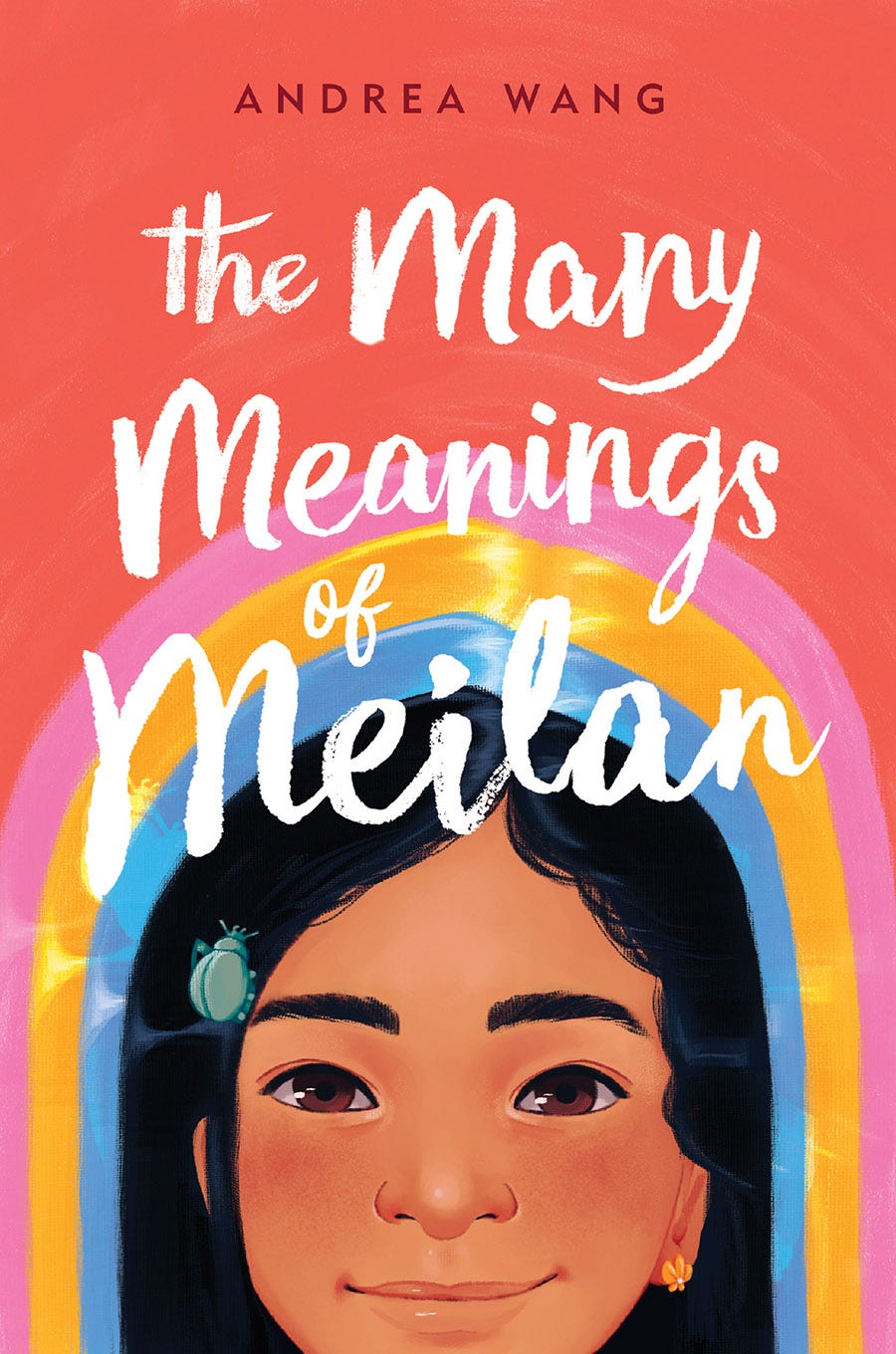
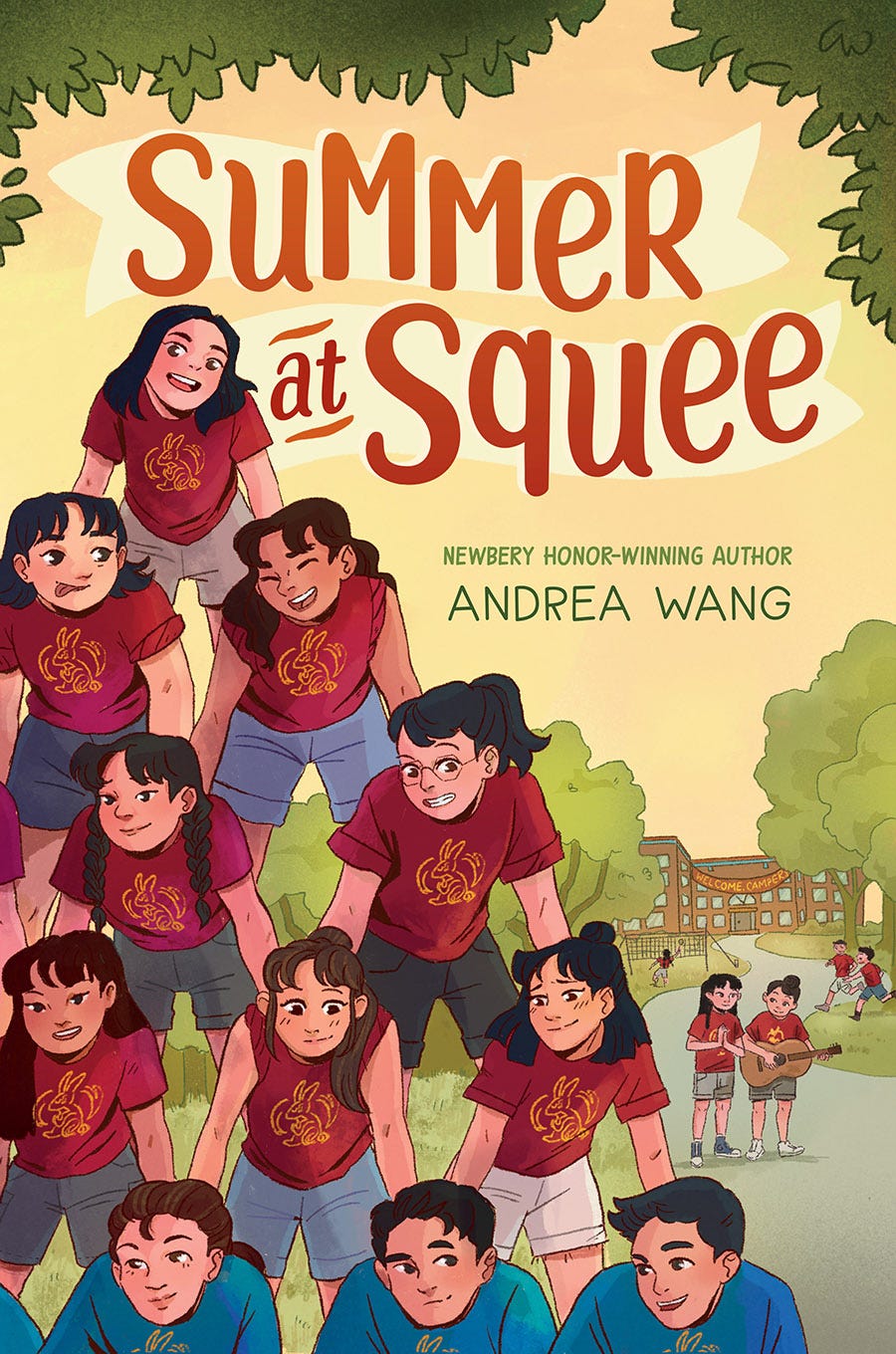
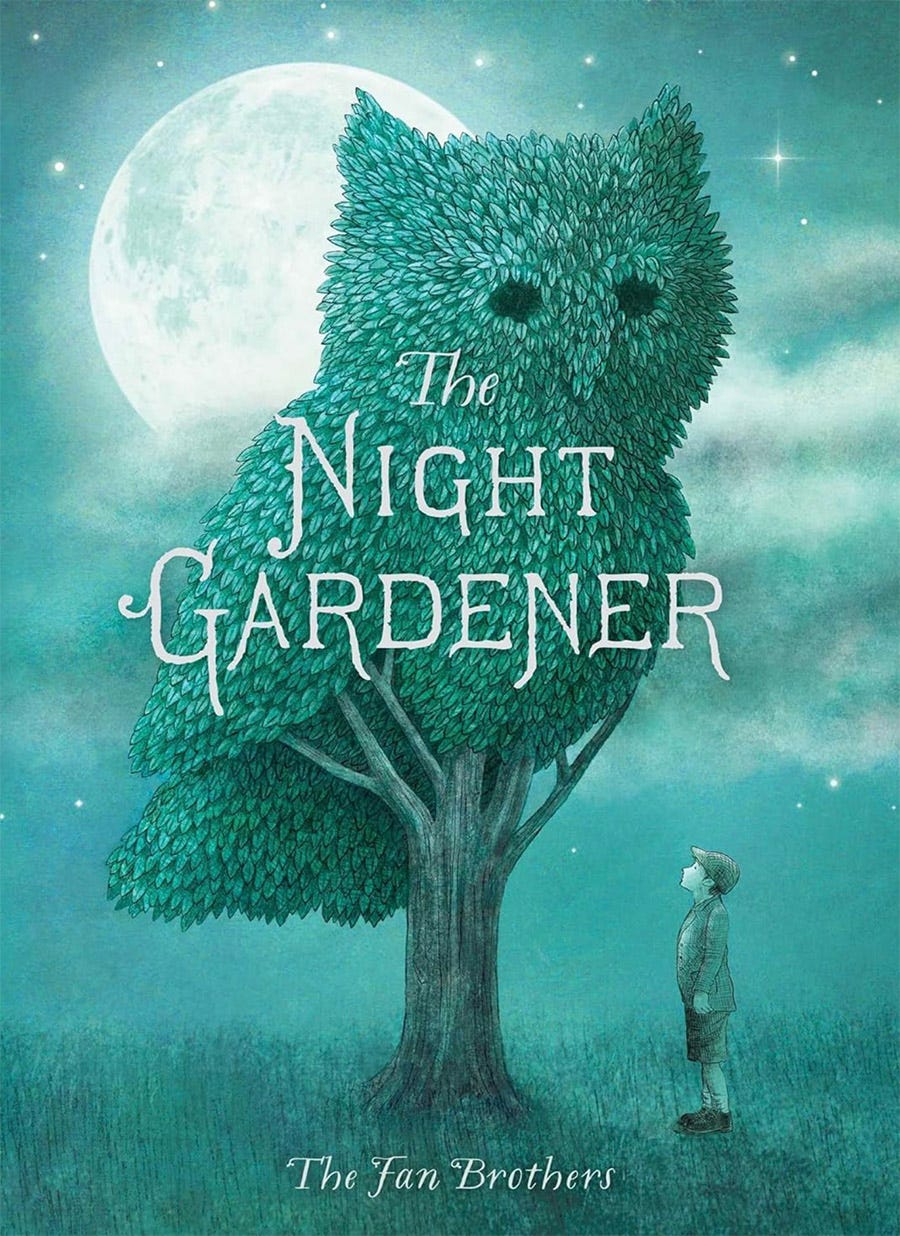

Really great post and interview! I got to meet Andrea a few (a couple?) years ago when I was in Denver for an author event. We met through a mutual author friend and she was the nicest! I loved getting to talk to her, I feel like she always has insightful things to say!
Andrea is incredible. And no one’s books outside of my critique group have been more influential to my work and career than hers.